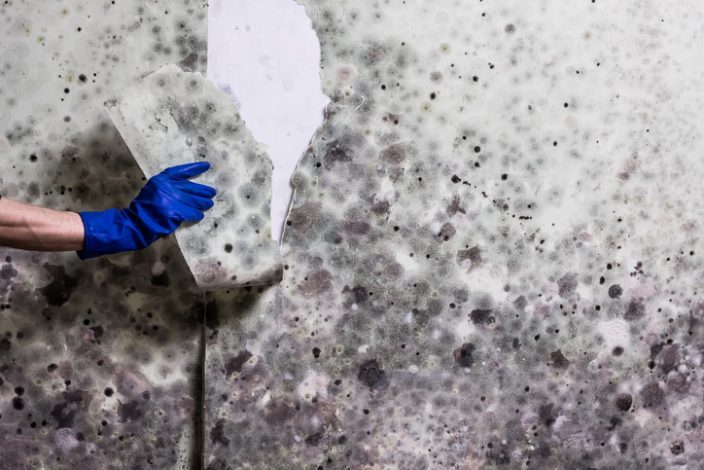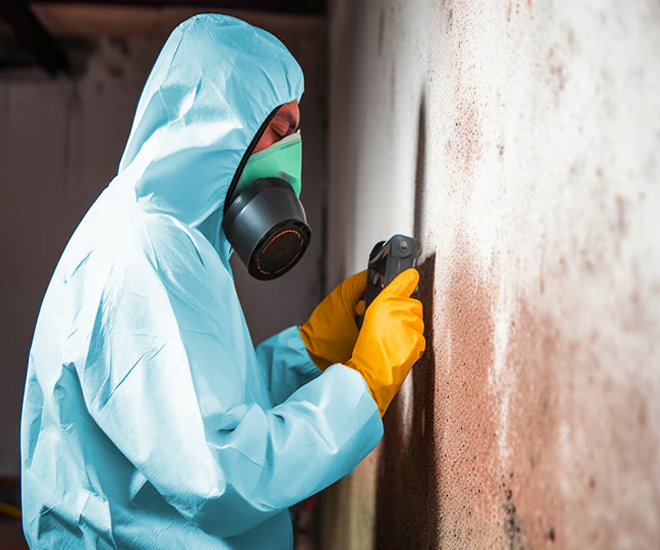Testing Air Quality After Mold Remediation
Testing Air Quality After Mold Remediation
Blog Article
Your Ultimate Overview to Article Mold Remediation Strategies
In the results of mold invasion, knowing just how to effectively remove the mold and mildew and prevent its reoccurrence is extremely important for maintaining a healthy interior environment. From choosing the appropriate cleaning and decontaminating approaches to executing approaches for long-term mold and mildew prevention, each action in the remediation trip plays a vital role in ensuring an effective outcome.
Comprehending Post-Mold Removal Process
After finishing the mold and mildew remediation procedure, it is crucial to comprehend the post-mold remediation methods that are essential to ensure a effective and comprehensive cleanup. When the mold and mildew has been removed, the next action entails cleansing and sanitizing the affected locations to avoid any type of regrowth of mold. This includes using specialized cleansing representatives to wipe down surfaces and eliminate any type of staying mold spores. It is important to dry the location completely to discourage the development of mold in the future (After mold remediation). Appropriate air flow and dehumidification can assist in this procedure.
Additionally, performing a final inspection post-remediation is important to make sure that all mold has actually been successfully gotten rid of. If the examination discloses any type of lingering mold, additional removal might be necessary.
Effective Cleaning and Decontaminating Techniques

Protecting Against Future Mold And Mildew Development

Relevance of Appropriate Air Flow
Proper air flow plays a critical role in protecting against moisture accumulation, a vital variable in mold and mildew development within interior environments. Effective air flow systems assist remove excess humidity from the air, decreasing the possibilities of mold and mildew spores locating the moisture they require to navigate here spread out and sprout. Without sufficient ventilation, interior areas can come to be a breeding place for mold, leading to prospective health threats and structural damages.
By guaranteeing proper air blood circulation, air flow systems can likewise assist in drying out wet areas more promptly after water damages or flooding occurrences, further hindering mold development. Post Remediation Inspection near me. Precede like shower rooms, cellars, kitchens, and attic rooms where moisture levels tend to be higher, setting up and preserving efficient air flow systems is crucial in avoiding mold invasions

Tracking and Maintenance Tips
Provided the crucial role that proper ventilation plays in avoiding mold development, it is vital to establish effective monitoring and upkeep ideas to ensure the ongoing performance of air flow systems. Routine inspections of air flow systems ought to be performed to look for any indicators of obstructions, leaks, or malfunctions that might restrain proper air flow. Monitoring humidity levels within the building is also critical, as high humidity can add to mold and mildew growth. Setting up a hygrometer can aid track humidity levels and sharp property owners to any kind of spikes that may need focus. Additionally, making sure that air filters are frequently cleansed or replaced is necessary for preserving the performance of the ventilation system. Carrying out a routine for regular upkeep jobs, such as duct cleaning and HVAC system assessments, can aid prevent concerns before they escalate. By remaining conscientious and proactive to the condition of air flow systems, home proprietors can efficiently alleviate the risk of mold regrowth and preserve a healthy and balanced indoor atmosphere.
Final Thought
Finally, post-mold remediation techniques are crucial for mold removal meaning making certain a safe and tidy atmosphere. Comprehending the process, applying efficient cleaning and disinfecting approaches, protecting against future mold and browse around this web-site mildew development, maintaining proper air flow, and normal surveillance are all critical actions in the remediation process. By following these guidelines, you can successfully eliminate mold and mildew and prevent its return, promoting a healthy living or functioning space for all passengers.
In the aftermath of mold invasion, understanding exactly how to efficiently eradicate the mold and stop its reoccurrence is critical for preserving a healthy interior atmosphere. Once the mold has been gotten rid of, the following action entails cleansing and sanitizing the influenced areas to protect against any regrowth of mold and mildew - testing air quality after mold remediation. After removing visible mold and mildew development, it is essential to clean up all surface areas in the damaged location to get rid of any type of staying mold and mildew spores. To further enhance mold prevention procedures, it is crucial to address underlying issues that at first led to mold development.Given the crucial role that proper air flow plays in avoiding mold growth, it is necessary to develop reliable surveillance and upkeep ideas to ensure the ongoing functionality of air flow systems
Report this page